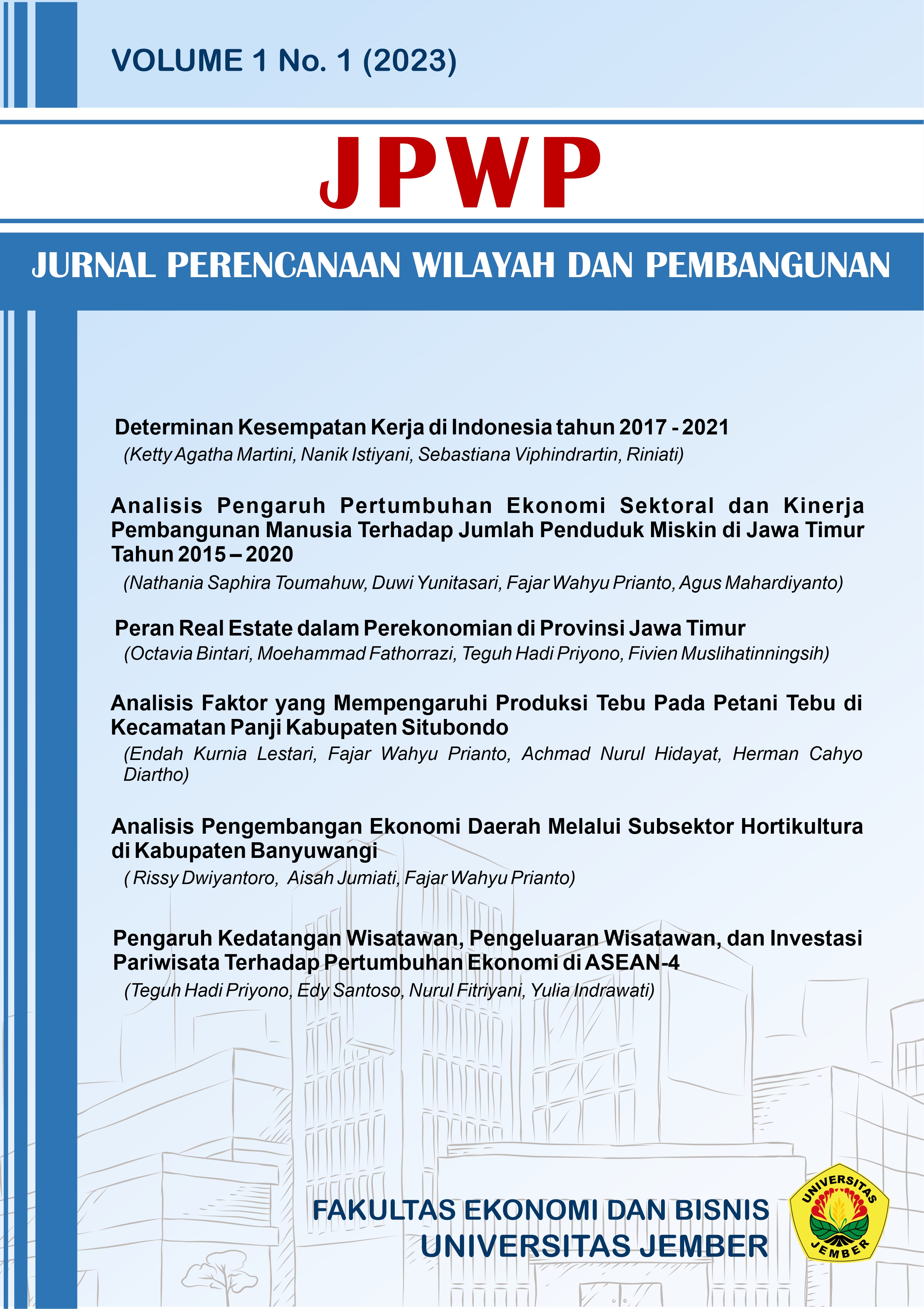Pengaruh Kedatangan Wisatawan, Pengeluaran Wisatawan, dan Investasi Pariwisata Terhadap Pertumbuhan Ekonomi di ASEAN-4
Abstract
This study aims to examine the effect of tourist arrivals, tourist expenditure, and tourism investment on economic growth in four ASEAN countries with almost the same tourism characteristics, namely Indonesia, the Philippines, Malaysia and Vietnam in 2005-2019. This study uses secondary data. The analytical tool used in this study is multiple linear regression analysis with the Fixed Effect Model (FEM) approach. The results showed that the variables of tourist arrivals, tourist expenditure, and tourism investment have a positive effect on economic growth and have a significant effect partially or simultaneously. Every change in the variable unit of tourist arrivals can result in a change in economic growth of 0.28%. Every change in the variable unit of tourist expenditure can result in a change in economic growth of 0.09%. Every change in the tourism investment variable unit can result in a change in economic growth of 0.05%.
References
Banerjee, O., Cicowiez, M., & Gachot, S. (2015). A quantitative framework for assessing public investment in tourism – An application to Haiti. Tourism Management, 51, 157–173.
Cunha, L. (2012). The Definition and Scope of Tourism: A Necessary Inquiry. 24.
Jhingan, M. L. (2016). Ekonomi Pembangunan dan Perencanaan Terjemahan Cetakan Ke-17. Rajawali Pers.
Nawaz, M. A., & Hassan, S. (2016). Investment and tourism: Insights from the literature. International Journal of Economic Perspectives, 10(4), 11.
Öztürk, M., Ihtiyar, A., & Aras, O. N. (2019). The Relationship Between Tourism Industry and Economic Growth: A Panel Data Analysis for ASEAN Member Countries. In S. Rezaei (Ed.), Quantitative Tourism Research in Asia (pp. 35–58). Springer Singapore.
Samimi, A. J., Sadeghi, S., & Sadeghi, S. (2013). The Relationship between Foreign Direct Investment and Tourism Development: Evidence from Developing Countries. 10.
Schubert, S. F. (2009). A Dynamic Model of Economic Growth in a Small Tourism Driven Economy. 26.
Song, H., Li, G., Witt, S. F., & Fei, B. (2010). Tourism Demand Modelling and Forecasting: How Should Demand Be Measured? Tourism Economics, 16(1), 63–81.
Tanana, A., Caruso, M., & Rodri̇Guez, C. (2021). Determinants of The Expenditure of Tourist Demand in Coastal Destinations. Advances in Hospitality and Tourism Research (AHTR).
Turguttopbaş, N. (2019). The Funding Structure of Turkish Tourism Sector and a Model Proposal for Tourism Revenue. International Journal of Health Management and Tourism, 1–14.
Yang, C.-H., Lin, H.-L., & Han, C.-C. (2010). Analysis of international tourist arrivals in China: The role of World Heritage Sites. Tourism Management, 31(6), 827–837.
Zakaria, H., Numata, S., & Hihara, K. (2021). Expenditure Patterns of Foreign Resident Visitors and Foreign Tourist Visitors at a Day-Trip Nature-Based Destination. Tourism and Hospitality, 2(2), 277–287.

This work is licensed under a Creative Commons Attribution-ShareAlike 4.0 International License.












